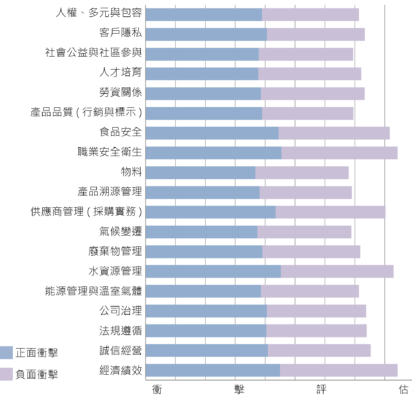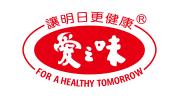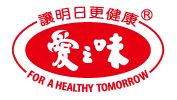Sustainable Development
Stakeholder Engagement
AGV refers to the recommendations of the GRI Standards and identifies stakeholders that may be affected by positive and negative economic, environmental, and social impacts. Based on the experience of communicating with stakeholders, there is no significant difference from last year. Our continued communications with the eight categories of groups are used as the reference for the information disclosed in this report.
Following discussions at internal meetings, AGV has identified eight categories of stakeholders: business partners (in the food industry), customers and distributors, consumers, shareholders and other investors, suppliers, employees and other workers, government agencies, and financial institutions.
Channels for Stakeholder Communication
| Stakeholder | Significance of the stakeholder to AGV | Communication channels | Frequency | Communication performance |
| 商業夥伴 (食品同業) | Peers in the food industry are significant to AGV in terms of competition, cooperation, industrial development and compliance standards. AGV should remain vigilant in its competition with its peers, while also seeking cooperation and partnership to promote the development and mutual prosperity of the whole industry. | •同業公會 •非公開聯繫 •參與食品產業會議 •官網訊息 | •按期參加 •不定期 | 1.於與會期間吸取經驗並透過同業間互相交流,創造永續食品產業環境與經濟發展。 2.激盪新產品的想法,截長補短來改善不足的部分。 |
| Customers and distributors | The significance of customers and distributors to AGV lies in providing revenue, promoting growth, giving valuable feedback, building good reputation and brand image, and enjoying AGV’s products and services. They are also the key to business development. | •雙方的定期性會議 •產品活動溝通 | •每季、每年按期進行 •即時 | 1.能按期展示行銷績效並交流意見以緊密合作關係。 2.能立即對於問題交換意見並解決。 3.確保消費者食用本公司產品之安全與安心。 4.透過不同管道獲得客戶的消費習慣,並調整產品方向以符合社會大眾得消費趨勢。 |
| Consumers | Consumers are the key force driving AGV’s development, and their needs have a significant impact on AGV’s technological R&D, quality management and marketing decisions. | •業務拜訪/電話/傳真/e-mail •客服專線 •客戶滿意度調查 | •不定期 •即時 | 1.確保消費者食用本公司產品之安全與安心。 2.透過不同管道獲得客戶的消費習慣,並調整產品方向以符合社會大眾得消費趨勢。 |
| 股東和其他 投資者 | Maintaining good relationships with shareholders and investors, valuing their opinions, and sharing profits and risks with AGV through effective communication play an important role in corporate governance. Therefore, shareholders and investors are highly important to AGV’s development and operations. | •召開股東會議 •法人說明會 •依主管機關規定公告重大訊息 •定期公告財務報表/年報 •股務聯絡信箱 •官網訊息揭露 •建立發言人制度 | •每年1次 •定期 •即時 | 1.公告本公司中、英文版之股東會議事手冊、股東會年報及議事錄供投資人參考。 2.每年舉辦法人說明會,俾使投資人瞭解本公司之各項產品營收與營運概況。 3.發生對股東權益或證券價格有重大影響之事項時,於公開資訊觀測站公告。 4.每季於公開資訊觀測站公告財務報告。 5.官網建立投資人專區提供聯絡窗口,分享公司最新消息及動態,並回答股東的問題。 |
| Suppliers | Suppliers are the key source of our food safety control, and we have established a good partnership with our suppliers to work together for food safety control. | •主動拜訪/電話/傳真/e-mail •問題探討 •新產品開發 •問卷填覆 •供應商稽核及訪談 •年度契約發包及廠商調查 •年節送禮/聚餐 | •不定期 •不定期 •每年1次 •不定期 | 1.共同遵守食品安全管理系統、環境安全系統及認證優質企業評鑑,提升食品產業的食安意識。 2.輔導供應商致力於遵守政府相關的法律規定及最新之社會責任相關規範,包含面向如下:勞工與人權、健康與安全、環境、道德規範。 3.提供符合相關食品安全管理制度之原物料並建立良好供貨管道,確保原物料能穩定供應。 |
| Employees and other workers | Employees form the backbone of AGV’s sustainable management and are the driving force behind its continued growth. In order to ensure effective use of human resources to achieve our goals, missions and vision, we make it possible for employees to work comfortably and bring out their potential, benefiting both AGV and its employees. | •員工意見留言版 •內部網路佈告欄 •經營管理階層雙向溝通 •申訴專線 •福委會會議 •提案改善制度 •提報績優員工 •勞工退休準備金監督委員會 •勞資會議 •人事評議委員會 | •即時 •即時 •每季1次 | 1.透過公司設立的不同溝通管道,使員工能有效表達自己的問題與需求,並加以解決。 2.建立良好溝通管道,消彌員工與公司產生對立的機會。 |
| Government agencies | Government agencies play an important role in building infrastructure, providing public services and improving the business environment for companies. All of our factories are subject to supervision and auditing by the competent authorities, such as the Securities and Futures Bureau, the Taiwan Stock Exchange, the National Taxation Bureau, the Fire Bureau, the Occupational Safety and Health Administration, Ministry of Labor, and the Environmental Protection Bureau, and we strictly comply with their requirements. | •與主管機關維持良好互動,如當面拜訪 •管理系統法規鑑別 •公文往來、公開資訊 •財政稅務問題之諮詢與釋疑 •查廠 •電話 •e mail聯繫 | •不定期 •即時 •不定期 •不定期 •不定期 | 1.與主管機關維持良好互動,並配合主管機關規定訂定相關辦法、守則及程序。 2.配合主管機關查核,其提出之疑問迅速及有效回覆。 3.依規定發佈重大訊息及申報各項資料。 4.確保消防安全設備正常運作。 5.保障勞工作業安全。 6.針對環保法規建立完整的鑑別與登錄機制及評估,若有不符規定,立即採取改善預防措施。 |
| Financial institutions | The financial institutions dealing with AGV provide a stable source of funding. | •e-mail •往來金融機構 | •即時 •不定期 | The financial institutions dealing with AGV continue to provide a stable source of funding and financial planning services. |
Identification and Analysis of Material Topics
In our sustainability report, stakeholders and material topics have been identified based on our experience in communication with stakeholders. The material topics stakeholders are concerned with have been identified through the following four steps:
1. Understanding the organizational context
參考GRI主題準則、永續會計準則(SASB)及食品同業,彙整出19項永續議題。
2. Identifying actual and potential impacts
由永續發展小組依據公司在各永續議題上對經濟、環境、社會(人與人權)之實際或潛在的負面衝擊與正面影響進行分析,再將各主題之實際負面衝擊、潛在負面衝擊、實際正面影響、潛在正面影響於經濟、環境、社會(人與人權)之關注程度及對公司衝擊程度進行重大順序排序,完成辨識及確認本公司之重大主題。
3. Assessing materiality and the significance of impact
本公司透過設置「利害關係人專區問卷」蒐集各方意見,並共回收問卷166份。永續發展小組依據問卷分析結果召開會議討論,結合過去營運經驗,針對各議題之影響顯著程度與發生可能性進行綜合評估。
經討論與分析後,最終確認5項議題作為本公司本次永續報告中之重大主題,做為後續永續管理與溝通的重點方向。
4. Prioritizing topics with the most significant impact for reporting
依據各重大議題之主題性質進行綜合評估,最終針對確認之 5 項重大永續議題,分別訂定 5 項對應的重大主題管理內容,涵蓋目標、策略、具體行動與成效指標等。
各項重大主題依其特性與關聯性,分配至永續報告書相關章節進行揭露,以回應利害關係人對本公司永續表現之關注。

本公司深切了解環境保護與永續發展的重要性,並經由鑑別程序確認出五項重大主題,分別為:「經濟績效」、「水資源管理」、「供應商管理(採購實務)」、「職業安全衛生」及「食品安全」。
上述主題將作為本報告書的核心章節,藉此強化與利害關係人之間的溝通與互動,全面展現本公司在經濟、環境及社會(含人權)面向的績效與承諾。
List of material topics
| List of material topics | Description of the organization’s policies or commitments related to the material topic (Description of their significance) | Description of impacts (Economy, environment and people (including human rights)) | Actual/Potential Positive/Negative (The above scenarios may exist simultaneously) | Preventive or remedial measures for negative impacts | Goals and targets (Setting and evaluation of short-, medium- and long-term goals) |
| Economic performance | 致力營收成長、獲利提升、經濟增值,並透過績效管理、創新發展、跨領域擴展及永續責任推動企業經營穩定。為實現穩健且持續成長的經濟績效,公司採取以下基本政策與執行策略: 基本政策: 1.穩健營收量價成長。 2.持續提升獲利能力。 3.整體經濟價值增值。 執行策略: 1.強化績效管理,提升經營效率。 2.推動產品與技術創新,提高市場競爭力。 3.拓展國內外市場,強化供應鏈整合與風險管理落實企業社會責任,平衡經濟效益與社會環境影響。 | 經濟:企業經濟績效直接影響利害關係人(投資人、員工、消費者、政府、供應商等)以及產業鏈發展,並對市場穩定與產業競爭力產生關鍵影響。 環境:經濟績效影響企業內外部環境,並透過供應鏈、產業鏈擴及全球市場,進一步影響永續發展策略。 人:所有利害關係人,均可能承受影響與衝擊,包含:投資人、政府、員工、消費者、協力廠、第三方驗證單位、學術單位、公益團體。 | 正面:穩定營收與獲利有助於產業發展、提升就業機會及國家經濟成長。良好治理與中長期經濟策略能強化企業競爭力,提升市場信任度。健全的經營模式能確保誠信經營、強化企業商譽,並增強投資人信心。 負面:若無法符合市場預期或公平分配盈餘,可能影響投資人權益並衍生法律風險。治理機制不完善將提高營運風險,影響公司穩定發展。經營不善或食品安全事件可能導致企業商譽受損、投資人撤資、消費者信心下降,進而影響營收及資金運作。 | 跨部門功能小組: 「研產銷戰略團隊」與「永續發展小組」監督與調整營運策略,確保財務穩健、滿足利害關係人需求,並落實ESG原則(環境、社會、治理)。 全面向營運會議: 雙週報、月會、季度、半年度、年度營運檢討會、董事會、股東會、法人說明會,即時檢討財務與經營績效,並研擬改善對策。 | 目標與標的: •短期:維持穩健成長,確保財務指標達標。 •中長期:追求持續成長與經營韌性,企業永續發展。 關鍵指標: 1.營收成長率、毛利率、營利率、淨利率等財務表現。 2.資產報酬率(ROA)、股東權益報酬率(ROE)、每股盈餘(EPS)。 3.整體企業價值提升:直接經濟價值、分配經濟價值、留存經濟價值。 優勢指標:市場占有率、產品鋪貨率、消費忠誠度、品牌商譽價值 |
| Water resource management | Faced with different water resource risks, AGV has started to take action in the three aspects of developing more sources of income, reducing expenses and emergency responses. AGV has held regular meetings to discuss issues concerning water resources, formulate policies and review the performance in water conservation, and has been promoting the idea of water conservation in various ways such as posters, slogans and educational sessions in order to integrate such ideas with every aspect of planning, design, production and office life. | 經濟: 1.水污染防治法 2.耗水費徵收辦法 3.水資源短缺 4.暴雨淹水機率增加 環境:隨意排放之污水污染廠區周遭環境。 人:因水資源短缺,而影響民生用水。 | Positive: Due to the shortage of water resources, we have adopted various methods to save water and reuse water resources to reduce the use of tap water. Negative: Shortage of water resources may affect production and operations, and the Water Pollution Control Act and water consumption fees may result in increased operating costs. | 1.成立水情因應小組,監控各廠水資源使用量及當地水情資訊。 2.環保設備投資與改良,排放水質目標訂定與監控。 3.制定災害緊急應變作業程序,實施節水專案,提高用水效率,建立限水應變計畫。 | With 2023 as the base period, our expected target is to reduce water consumption by 3% by 2025. |
| 供應商管理(採購實務) | Committed to source management in the procurement of raw materials, we require our suppliers to achieve waste reduction and prevention in manufacturing processes and put emphasis on social responsibilities and human rights protection. | Economy: Stable and instant supply of raw materials to ensure the operation of manufacturing processes. Environment: Achieving carbon reduction, energy consumption and regeneration of water resources. Human rights: Putting emphasis on corporate social responsibility, improving human rights protection and reducing inequality/discrimination. | Positive: Requiring suppliers to implement environmental, social responsibility and human rights measures helps ensure the sustainability of raw material sources and increase the social and environmental benefits of our supply chains, thus enhancing our reputation. Negative: 1. Failure of any supplier to comply with environmental, social and human rights measures may exacerbate environmental risks and social impacts, causing damage to our image and operations, and even leading to legal and business interruption risks. 2. If a supplier is found to be in violation of the requirements during an audit, we will require immediate improvement and suspension of supply. | There may be a situation where no suppliers are qualified, so there must be no fewer than two suppliers to supply us. | Short-term: Our suppliers are able to achieve waste reduction and prevention in manufacturing processes and put emphasis on social responsibilities and human rights protection. Medium- and long-term: Our suppliers are able to acquire certifications for environmental management standards (ISO 14001), greenhouse gas (GHG) inventory (ISO 14064) and water footprint (WFN). |
| Occupational safety and health | 1.尊重生命,關懷安全 2.節約資源,落實管理 3.持續改善,永續發展 4.環安衛生,人人有責 | Economy: The Company bears medical expenses, responsibility for compensation, and the cost of money and time for the accident. Environment: Creating a safe, healthy and comfortable work environment and reducing the occurrence of occupational accidents to meet the requirements of the law. People: Employees are unable to work and lose a source of income. | Positive: 1. Establishing a culture of safety and health and providing employees with a safe working environment to reduce the occurrence of occupational accidents and protect the health and safety of employees. 2. Compliance with applicable laws and regulations is able to reduce legal risks, protect our reputation, and attract the trust of investors and consumers. 3. Establishing a good image of occupational safety and health to attract outstanding talents and enhance our competitiveness. Negative: 1. Personnel experience disabling injuries due to failure to implement operational safety regulations. 2. According to the relevant internal indicators, if the target is not met, analyze the cause and propose improvement measures. | Reviewing FR and SR annually and organizing training to ensure the most solid protection of our employees. | In accordance with EHS policies and strategies, we will develop management indicators and set target values to reduce personal health and safety accidents. In addition, we will improve the protection of process safety to continuously enhance our performance in occupational safety and health. |
| Food safety | To maintain good product quality, it is necessary to establish and implement a QA system covering our overall quality operations. As the current mainstream food safety system applied in the food industry, ISO 22000 is able to ensure the quality of our products through certification and implementation of the system, and therefore can definitely prevent the impact of any material food safety incident from affecting our brand image and overall operations. | Economy: In recent years, the food industry has been susceptible to the impact of economic cycles. Raw materials, materials, and wages have risen. The costs of the food industry have been impacted. Therefore, it is necessary to focus on and continue to maintain food safety, establish a good brand value and company image, and promote business performance. Make products more economical. Environment: Public confidence in the food safety of the food industry has been impacted due to drastic changes in the industry and the occurrence of major food safety incidents (Sudan Red, Ethane Oxide) in the country. People: Increasing health awareness on the part of consumers and stricter popular requirements for the food chain, including the sources of food materials and the processes of food manufacturing or transportation, are factors likely to have an impact on our operations. In the face of such impact to the industrial environment, our future focus of development will be based on our brand reputation and size of operations to create high-quality, easily transportable and affordable products. | Positive: Through the establishment and implementation of an ISO 22000 food safety system, we are able to maintain product quality, protect customer health and safety, enhance our brand image and trust, increase customer loyalty, and promote continuous business growth. Negative: When food safety concerns arise, if measures are not taken in time, it will not only cause panic among consumers, but also lead to more negative news. | In case of food safety concerns, our customer service representatives will first check customers’ situations and initiate a product investigation at the same time. If the food safety concern comes from the raw materials provided by the supplier, we will audit or return the raw materials of the upstream suppliers. In addition, we have established a system for recall and destruction of finished products, and the recall mechanism will be activated if it is confirmed that there are food safety concerns for the products. | 1.執行食品安全管理系統實施及更新相關之資訊於整個公司,其程度必需確保達到ISO 22000:2018 食品安全管理系統《危害分析及重要管制點系統要求》所要求的食品安全。 2.定期評估,需要時並更新食品安全管理系統,以確保系統能反映出本公司的活動,並在受管制的食品安全危害中納入最新資訊。 3.建立【法規鑑別管理程序】以確保持續符合最新法令、法規和顧客要求的食品安全。 食品安全管理系統執行的人員應有勝任能力,且應具有適當內外部教育訓練並取得相關證照以實施、運作或評鑑食品安全管理系統。 |

